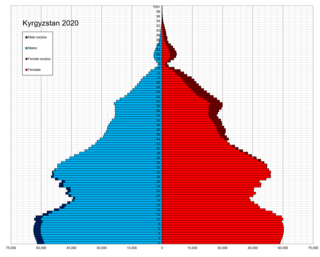
The Demographics of Kyrgyzstan is about the demographic features of the population of Kyrgyzstan, including population growth, population density, ethnicity, education level, health, economic status, religious affiliations, and other aspects of the population. The name Kyrgyz, both for the people and the country, means "forty tribes", a reference to the epic hero Manas who unified forty tribes against the Oirats, as symbolized by the 40-ray sun on the flag of Kyrgyzstan.

Kyrgyzstan, officially the Kyrgyz Republic, is a landlocked country in Central Asia, lying in the Tian Shan and Pamir mountain ranges. Bishkek is the capital and largest city of the country. Kyrgyzstan is bordered by Kazakhstan to the north, Uzbekistan to the west, Tajikistan to the south, and China to the east and southeast. Ethnic Kyrgyz make up the majority of the country's 7 million people, followed by significant minorities of Uzbeks and Russians.

Chagatai, also known as Turki, Eastern Turkic, or Chagatai Turkic, is an extinct Turkic language that was once widely spoken across Central Asia. It remained the shared literary language in the region until the early 20th century. It was used across a wide geographic area including western or Russian Turkestan, eastern or Chinese Turkestan, the Crimea, the Volga region, etc. Literary Chagatai is the predecessor of the modern Karluk branch of Turkic languages, which includes Uzbek and Uyghur. Turkmen, which is not within the Karluk branch but in the Oghuz branch of Turkic languages, was nonetheless heavily influenced by Chagatai for centuries.

The som is the currency of Kyrgyzstan.
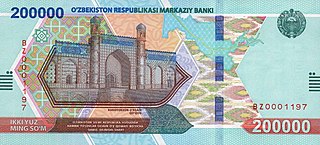
The sum is the official currency of Uzbekistan. Uzbekistan replaced the ruble with the sum at par in on July 16, 1994. No subdivisions of this sum were issued and only banknotes were produced, in denominations of 1, 3, 5, 10, 25, 50, 100, 200, 500, 1,000, 5,000, and 10,000 sum. Because it was meant to be a transitional currency, the design was rather simplistic.
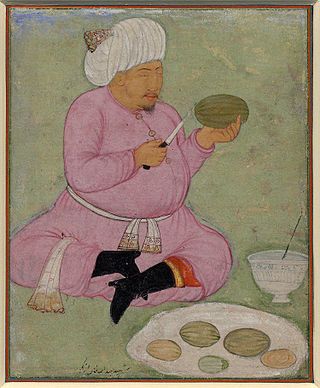
Abdullah Khan (1533/4–1598), known as "The Old Khan", was an Uzbek ruler of the Khanate of Bukhara (1500–1785). He was the last Shaybanid Khan of Bukhara from 1583 until his death.
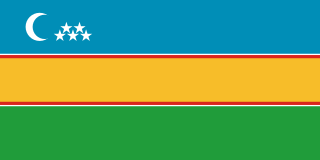
The Karakalpaks or Qaraqalpaqs, are a Turkic ethnic group native to Karakalpakstan in Northwestern Uzbekistan. During the 18th century, they settled in the lower reaches of the Amu Darya and in the (former) delta of Amu Darya on the southern shore of the Aral Sea. The name "Karakalpak" comes from two words: qara meaning "black" and qalpaq meaning "hat". The Karakalpaks number nearly 871,970 worldwide, out of which about 726,000 live in the Karakalpakstan region of Uzbekistan.

Yusuf Khass Hajib was an 11th-century Central Asian Turkic poet, statesman, vizier, Maturidi theologian and philosopher from the city of Balasaghun, the capital of the Kara-Khanid Khanate in modern-day Kyrgyzstan. He wrote the Kutadgu Bilig and most of what is known about him, comes from his own writings in this work. He is mostly referred to as Yūsuf Balasaguni, derived from his city of origin.

The ruble or rouble is the currency unit of Belarus and Russia. Historically, it was the name of the currency of the Russian Empire and, later, of the Soviet Union.
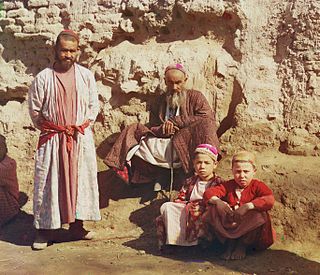
Sart is a name for the settled inhabitants of Central Asia which has had shifting meanings over the centuries.

Soviet Central Asia was the part of Central Asia administered by the Soviet Union between 1918 and 1991, when the Central Asian republics declared independence. It is nearly synonymous with Russian Turkestan in the Russian Empire. Soviet Central Asia went through many territorial divisions before the current borders were created in the 1920s and 1930s.

The Lyuli, Jughi or Jugi are a branch of the Ghorbati people living in Central Asia, primarily Tajikistan, Uzbekistan, Turkmenistan, Kazakhstan, and southern Kyrgyzstan; also, related groups can be found in Turkey, and the Balkans, Crimea, Southern Russia and Afghanistan. They speak ethnolects of the Persian and Turkic language and practice Sunni Islam. The terms Lyuli and Jugi are considered pejorative. They have a clan organization. Division into sub-clans is also practiced. The Lyuli community is extremely closed towards non-Lyuli.
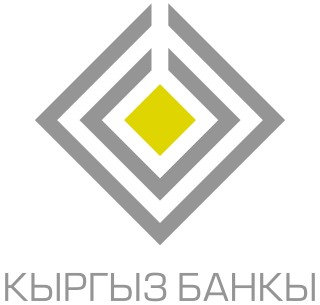
The National Bank of the Kyrgyz Republic is the central bank of Kyrgyzstan and is primarily responsible for the strategic monetary policy planning of the country as well as the issuance of the national currency, the Som.

Kyrgyzstan is one of four former Soviet republics in Central Asia to have Russian as a de jure official language. The Kyrgyz language was adopted as the official language in 1991. After pressure from the Russian and other minorities in the country, the republic adopted Russian as an official language as well in 1997, to become an officially bilingual country.
The Cinema of Central Asia usually refers to the cinema of five Central Asian countries. Central Asian cinema can further be divided into three historical periods, Soviet Central Asian film (1919–1987), a New Wave of Central Asian film (1988–1992), and the modern period of film of the independent Central Asian countries (1992–present).

Russian Braille is the braille alphabet of the Russian language. With suitable extensions, it is used for languages of neighboring countries that are written in Cyrillic in print, such as Ukrainian and Mongolian. It is based on the Latin transliteration of Cyrillic, with additional letters assigned idiosyncratically. In Russian, it is known as the Braille Script.
Uzbeks represent a large diaspora in Russia, numbering 1.9 million. Most of the Uzbeks living in Russia are seasonal migrant workers. Most of them have come after the dissolution of the Soviet Union. Due to racial and cultural differences, they are one of the most discriminated-against minorities in Russia, and hence rarely settle outside of the Russian capital, Moscow.
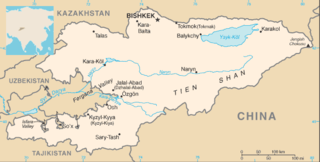
The Kazakhstan–Kyrgyzstan border is 1,212 kilometres (753 mi) and runs from the tripoint with Uzbekistan to the tripoint with China. Bishkek, the Kyrgyz capital, is situated just 16 km to the south of this boundary, and Almaty is situated just 29 kilometres (18 mi) to the north of it.

The Turkestan Autonomy or Kokand Autonomy was a short-lived state in Central Asia that existed at the beginning of the Russian Civil War. It was formed on 27 November 1917 and existed until 22 February 1918. It was a secular republic, headed by a president.


















